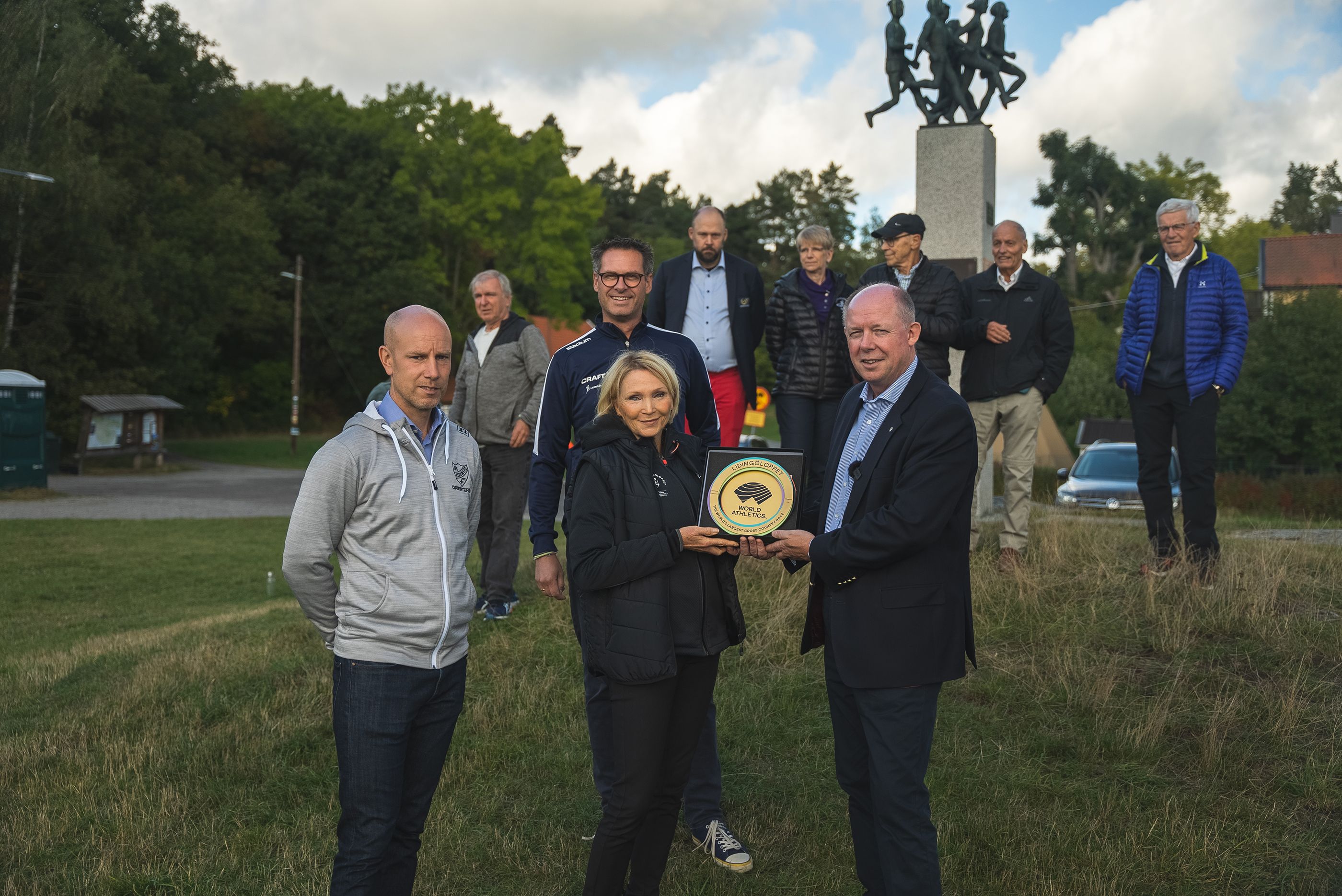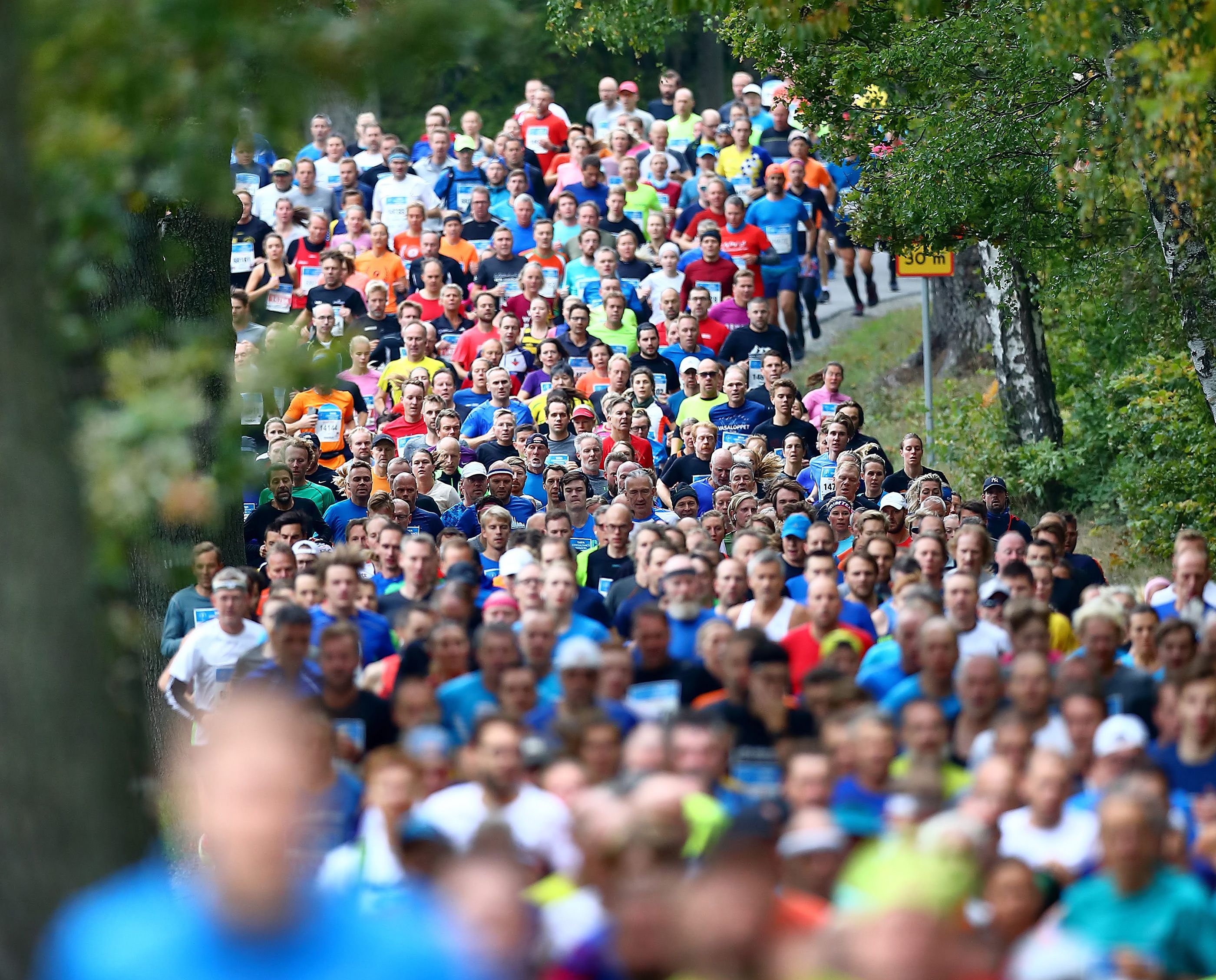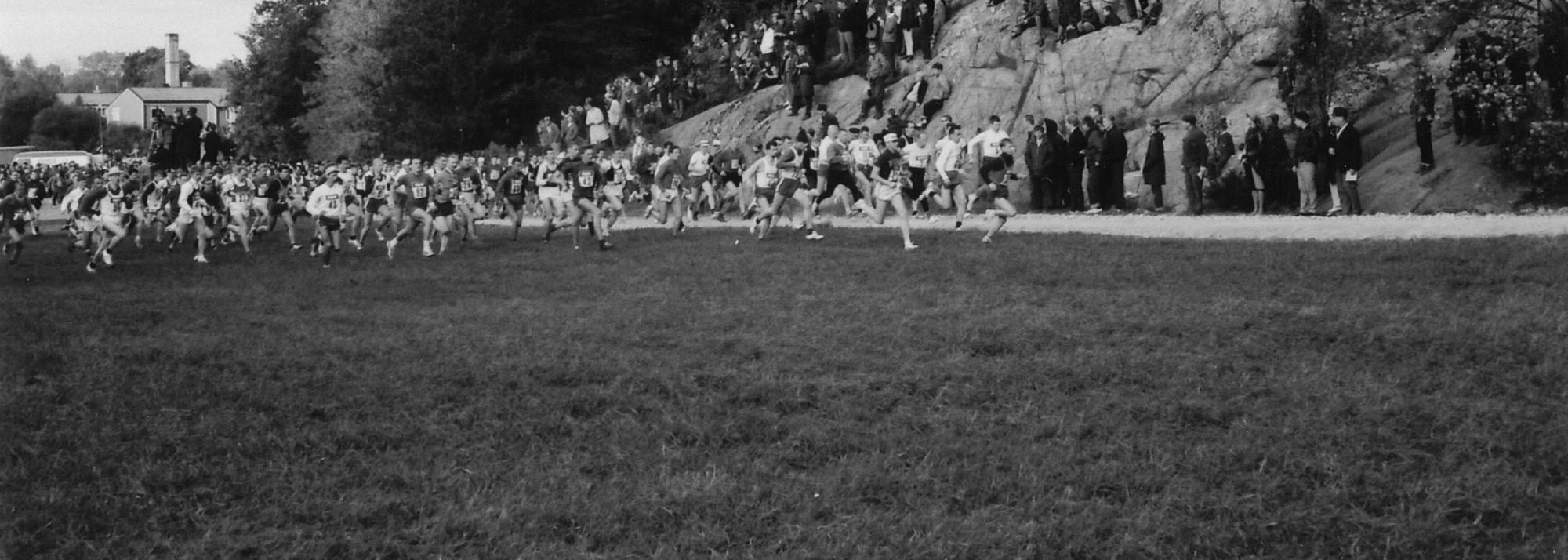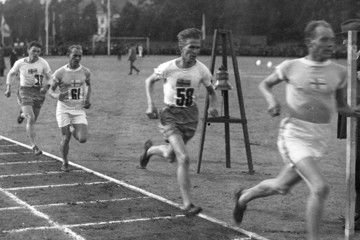The start of the 1965 Lidingöloppet (© Lidingöloppet)
The history of the annual Lidingöloppet, the world’s largest cross country running race, has been recognised with the World Athletics Heritage Plaque (category - Competition).
The Lidingöloppet, a World Athletics Cross Country Tour Silver competition that celebrates its 58th edition this weekend, is the 79th recipient of the World Athletics Heritage Plaque since the programme was created in December 2018.
Lidingö – where the competition takes place – is an island suburb of Stockholm, while ‘loppet’ is Swedish for ‘race’.
Since 1982, the race has been listed in the Guinness World Records as the world's largest cross country race. There are usually around 15,000 runners in the 30km, with other races bringing the total number of participants across the weekend to around 35,000 each year.
“The Lidingöloppet is rightly renowned as one of the world’s great cross country running competitions,” World Athletics President Sebastian Coe said. “Its history and ongoing legacy are well deserving of a World Athletics Heritage Plaque.
“A classic event in Sweden’s annual sporting calendar, Lidingöloppet’s impact on the development of recreational running has been profound. It has encouraged hundreds of thousands to take up exercise and get enjoyment from running in the vast, beautiful Swedish countryside.”
The World Athletics Heritage Plaque is a location-based recognition, awarded for 'an outstanding contribution to the worldwide history and development of the sport of track and field athletics and of out-of-stadia athletics disciplines such as cross country, mountain, road, trail and ultra-running, and race walking'.

Mikael Jansson, Mikkel Mördrup, Anna Öberg and Chris Turner with the Lidingöloppet plaque (© Marcus Wicander)
Grete Waitz – 12 victories
Lidingöloppet, which is organised by the sports clubs IFK Lidingö Orientering (SOK) and IFK Lidingö Track and Field (Friidrott), takes place on a challenging, undulating course. Three-time winner Malin Ewerlöf, who lives in Lidingö, told stadium.se: “The Lidingö race is like long interval training. The toughest stretch is between 15-20km. Here it goes up and down all the time.”
The last 10km is most famous and called the 'last mile' (in Sweden, 10km is normally described as a 'mil'). At 25km, runners come to the famous 'Abborrbacken' (perch hill), a key challenge of the race. The hill is 540m in length, during which runners ascend 48m from sea level.
The initiators of the race in 1965 were Karl Axel "Kacke" Karlberg and Sven Gärderud. Their inspiration came from an article by sportswriter Sven Lindhagen, who proposed an annual mass event for recreational runners comparable with the Vasaloppet for cross country skiers. The first ever Lidingö race was 30km long and 644 runners signed up. Of these, 512 completed the distance.
The distance for senior men has remained 30km. In 1967, a women’s race over 15km was established. Since 1996 women also have had an official distance over 30km.

Runners in action at the Lidingöloppet (© Lidingöloppet)
Norway’s five-time world cross country champion Grete Waitz was a 12-time winner of the women’s 15km race. Other illustrious women’s race winners include Ingrid Kristiansen, Tegla Loroupe, Angela Tooby, Lena Gavelin, Malin Ewerlöf, Sara Wedlund and Annemari Sandell.
The men’s 30km has been won by many distance running luminaries including Tapio Kantanen, Knut Kvalheim, Douglas Wakiihuri, Benson Masya and Mustafa Mohamed.
Since 1968, a giant wreath has been awarded to the winner of each running category. A Kranskulla (Wreath Maiden) and a Kransmas (Wreath Man) are appointed each year from the members of the organising clubs to place the wreaths around the neck of each winner as they approach the finish line. That task is not easily accomplished while running!
Chris Turner for World Athletics Heritage








